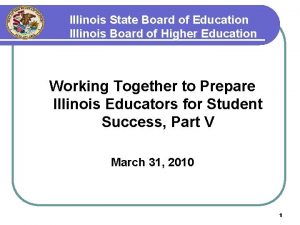Chenoweth Stephan Why civil resistance sometimes fails The












- Slides: 12

Chenoweth & Stephan: Why civil resistance sometimes fails: The Burmese uprising 1988 -1990 Alexandra Baliaková, 363 648

BURMESE UPRISING 1988: a popular uprising in Burma posed an unprecedented challenge to that country’s military dictatorship (came to power in 1962) Spontaneous student-led protests against police violence in Rangoon quickly grew into a nationwide campaign to dismantle the junta involving large numbers of Burma’s ethnically and linguistically diverse population

FEW OPPOSITION GAINS the temporary replacement of military with civilian rule holding of multiparty elections in 1990 won by the opposition National League for Democracy (NLD) the 1988 campaign is best characterized as a failure- a new military dictatorship came to power that ignored the election results and maintained power- stays highly repressive military dictatorship

OUTCOME OF THE RANGOON MASSACRE General Ne Win – steps down as president and chair of the Burmese Socialist Program Party (BSPP) Man responsible for the Rangoon Massacre was installed as new chairman Nationwide strike, mass protest- 8. august 1988 Demands end of military dictatorship and the installation of an interim government in order to prepare for multiparty elections Government opens up fire Over 1000 dead demonstrators in three days

1990 MULTIPARTY ELECTIONS National League for Democracy (NLD)- over 80 % State Law and Order Restoration Council (SLORC) – military-led, refused to respect the election Aung San Suu Kyi- under home arrest- JULY 1990 Guerilla resistance Aung San Suu Kyi-unsuccesful dialogue with military leaders on democratic reforms SLORC- renamed to State Peace and Development Council (SPDC)- remains in control Opposition not in position to resist through campaigns of noncooperations

INTERNATIONAL FACTORS Aung San Suu Kyi- won the Nobel Peace Prize – 1991 Sanctions from UN for human rights abuses Substituitions from China and India U. S. sanctions were weak International sanctions did not raise the political costs to the Burmese regime of repressing the nonviolent opposition

DOMESTIC FACTORS Nonviolent campain was ineffective in producing loyalty shifts within the securityforces Failed to present itself as a viable political alternative to junta Failed to to alter the self-interest equation of the security forces- no incentives to challenge or disobey regime orders Regime divided and co-opted groups of Buddhist monks, preventing them from unified front Nonviolent mobilization was massive and cross-cutting

NONVIOLENT MOVEMENT Overreliance on single personalities Inability to reconcile across competing factions Lack of consistent information about human rights abuses Inability to mobilize masses at all Small gurrilla units with a passive support base divided along ethnic lines

RESULTS Both violent and nonviolent campaings failed to raise the costs of regime repression to threatened the regime The domestic costs were inadequate to produce the desired results Mobilization was selective and leader dependent

CONLUSION Mobilization may be critical determinant of success, given that a widespread, cross-cutting, and decentralized campaign may be more effective in raising the political costs of repression because of its operational resilience, mass apeeal, and anonymity

SOURCE Chenoweth, Erica and Stephan, Maria J, “Why Civil Resistanace sometimes Fails: The Burmese Uprsing 19881990” chapter 7 in Why Civil Resistance Works: The Strategic Logic of Nonviolent Conflict. (Columbia Studies in Terrorism and Irregular Warfare, 2011): 172 -191.

QUESTIONS ? Thank you for your attention!
 Karin chenoweth
Karin chenoweth Lesley chenoweth
Lesley chenoweth Hey bye bye
Hey bye bye Sometimes you win some
Sometimes you win some They say sometimes you win some
They say sometimes you win some Sometimes sweet sometimes sour
Sometimes sweet sometimes sour Sometimes cold sometimes hot
Sometimes cold sometimes hot Specific cake resistance definition
Specific cake resistance definition Ignoring friction air resistance and electrical resistance
Ignoring friction air resistance and electrical resistance Civil rights and civil liberties webquest
Civil rights and civil liberties webquest Don't ask why why why
Don't ask why why why Why are controlled experiments sometimes impossible
Why are controlled experiments sometimes impossible Resistance opposes the flow of charge
Resistance opposes the flow of charge






















